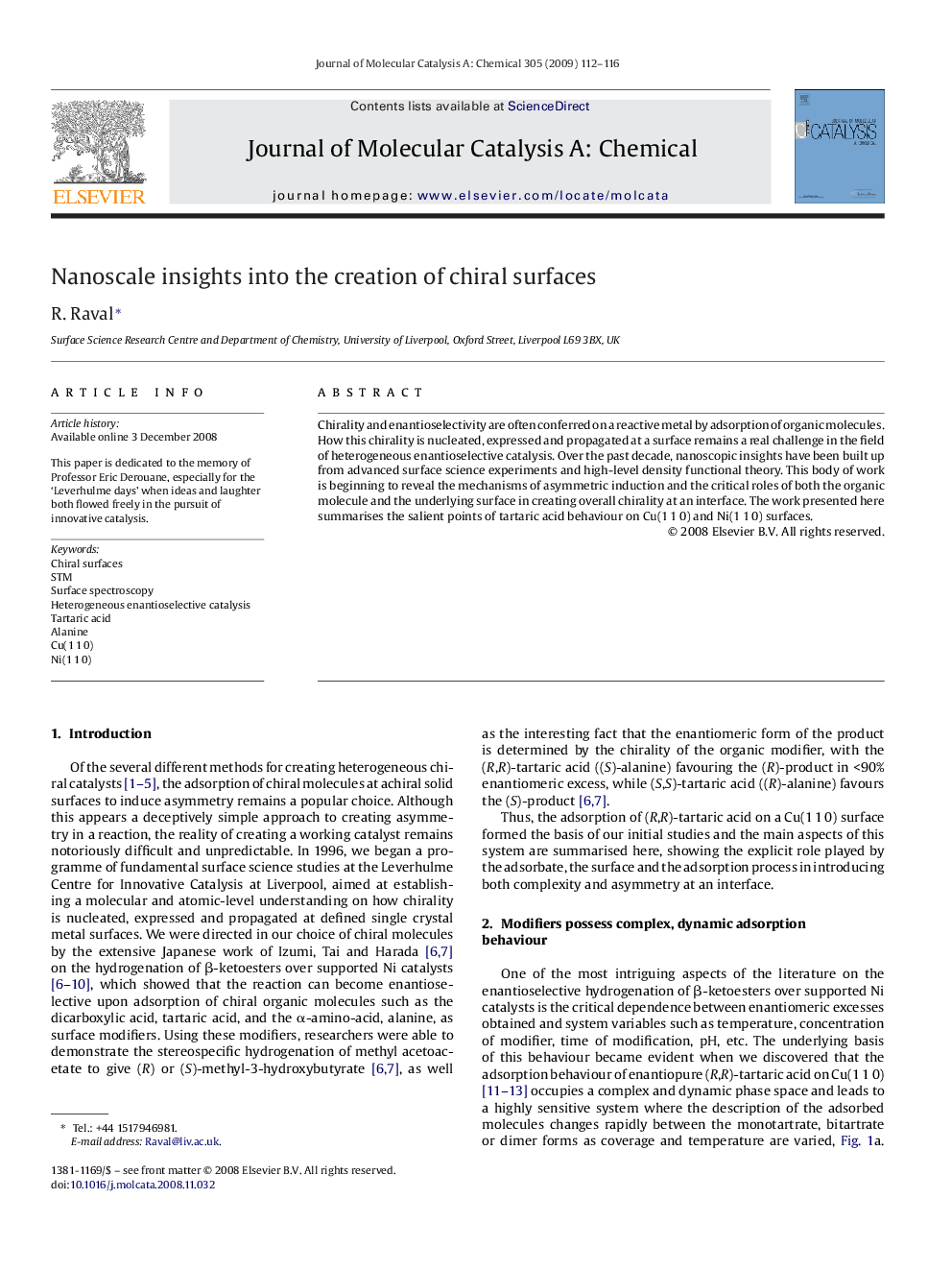| Article ID | Journal | Published Year | Pages | File Type |
|---|---|---|---|---|
| 66982 | Journal of Molecular Catalysis A: Chemical | 2009 | 5 Pages |
Chirality and enantioselectivity are often conferred on a reactive metal by adsorption of organic molecules. How this chirality is nucleated, expressed and propagated at a surface remains a real challenge in the field of heterogeneous enantioselective catalysis. Over the past decade, nanoscopic insights have been built up from advanced surface science experiments and high-level density functional theory. This body of work is beginning to reveal the mechanisms of asymmetric induction and the critical roles of both the organic molecule and the underlying surface in creating overall chirality at an interface. The work presented here summarises the salient points of tartaric acid behaviour on Cu(1 1 0) and Ni(1 1 0) surfaces.
Graphical abstractFigure optionsDownload full-size imageDownload as PowerPoint slide
